Kids love their shadows, love to chase shadows, and love to make shadows do silly things! There are also some fun things to learn about shadows for science and STEM! With Groundhog Day approaching, I thought making a groundhog puppet and exploring the science of shadows would be fun. Grab our free groundhog template and explore simple physics!
How To Make A Groundhog Day Puppet
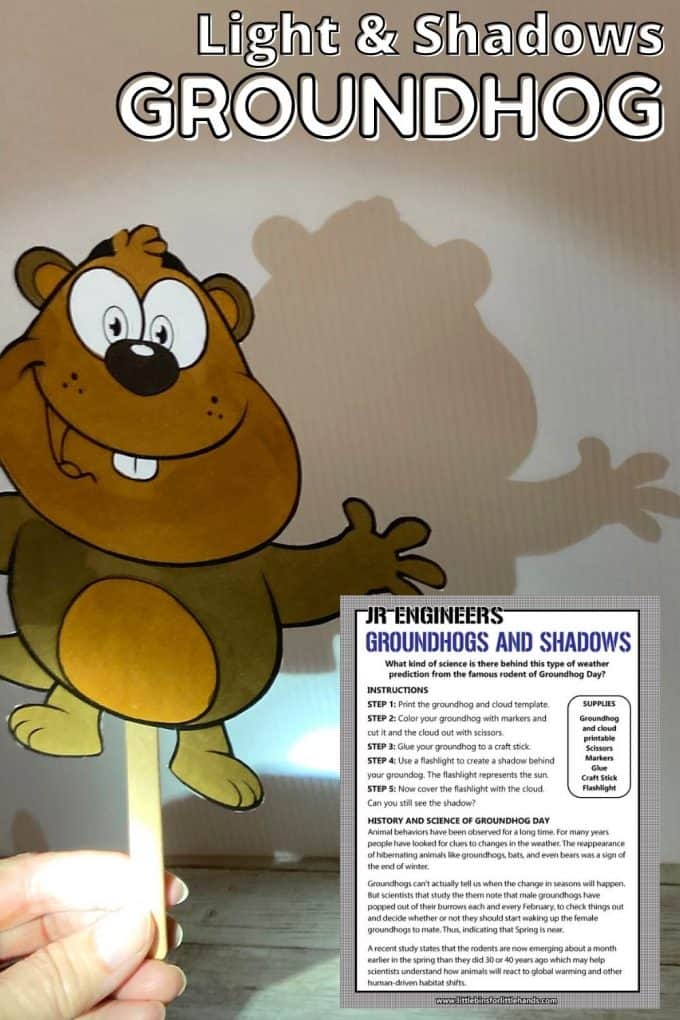
DID THE GROUNDHOG SEE HIS SHADOW?
People in many cultures have observed animal behaviors for a long time. For example, people have looked for clues to changes in the weather from animal behaviors. The reappearance of hibernating animals like groundhogs, bats, and even bears was a sign of winter’s end.
The annual Groundhog Day originates in a German legend that winter continues if a furry rodent casts a shadow on February 2nd. If not, spring comes early.
YOU MAY ALSO LIKE: Hibernating Animals Activity Pack
Groundhogs can’t tell us when the change in seasons will happen. But scientists who study them note that male groundhogs do pop out of their burrows every February to check things out and decide whether or not they should start waking up the female groundhogs to mate. Thus indicating that Spring is near.
A recent study states that the rodents are now emerging about a month earlier in the spring than they did 30 or 40 years ago which may help scientists understand how animals will react to global warming and other human-driven habitat shifts.
ALSO CHECK OUT: Groundhog Day STEM Activities
CLICK HERE TO GET YOUR FREE GROUNDHOG DAY PROJECT!
Groundhog Puppet
TIP: Super easy to download and set up today! Use the groundhog template for all your science and craft activities for Groundhog Day!
SUPPLIES:
- Printable Groundhog Template
- Scissors
- Markers
- Glue
- Craft Stick
- Flashlight
INSTRUCTIONS
STEP 1: Print out the groundhog and cloud template.

STEP 2: Color in your groundhog with markers and then cut it out, along with the cloud template.

STEP 3: Glue your groundhog to a craft stick.

STEP 4: Use a flashlight to create a shadow behind your groundhog puppet. The flashlight represents the sun.

STEP 5: Now cover the flashlight with the cloud. Can you still see the shadow?

WHAT IS A SHADOW?
Shadows are all about physics and light. You need a source of light for there to be a shadow. This is why the groundhog may or may not see his shadow depending on the weather that day.
Here, you are using your flashlight as the light source. An object in front of the light source blocks the light and creates the shadow. Since the light can’t pass through our paper, it shadows the wall. If our paper were transparent, however, the light would pass through, and there would NOT be a shadow!
You can also play around with the angle you hold your groundhog puppet or how close or far from the wall you hold them. What happens?
Now, when Groundhog Day rolls around, you will know exactly what’s going on!
EXTEND THE LEARNING
Try one of these activities below to explore the science of shadows with kids! You can find more fun Groundhog Day STEM Challenges here.
More Fun Ways To Explore Shadows
- Make these fun LEGO shadow drawings.
- Can you make shadows with your body?
- Explore shadows with groundhog puppets.

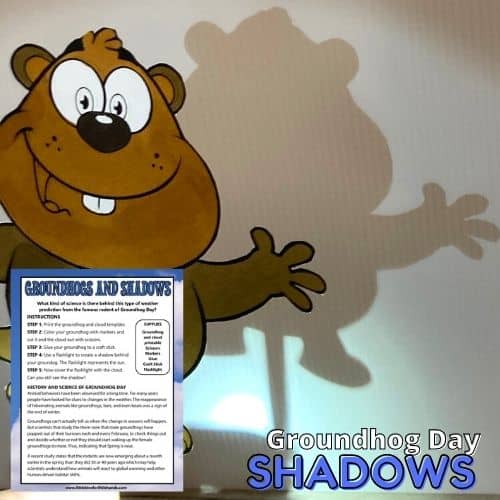
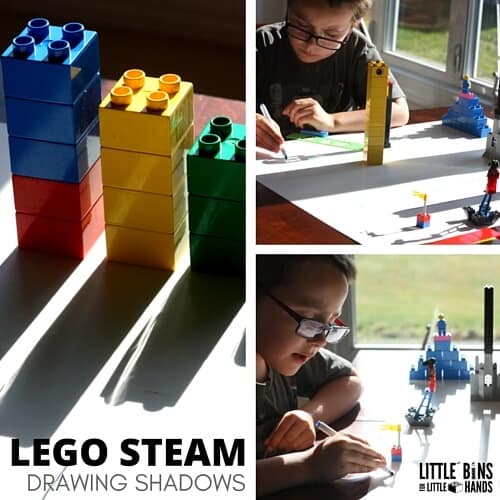
Printable Groundhog Day Activities Pack
Perfect for grades K-3 or as needed! Easy to use in the classroom or at home with inexpensive, hands-on, doable projects!
- 8+ Groundhog Day activities and projects for kids that are easy to set up and fit into your available time, even if it’s limited! A fun theme for mid-winter science and STEM exploration that kids love!
- Printable Groundhog theme STEM challenges that are simple but engaging for home or classroom. Perfect for K-2 and beyond and adaptable to many skill levels.
- Simple light theme science explanations and activities include fun activities, experiments, projects, and simple vocabulary cards. Print and make animal silhouette puppets to explore shadows!
- Easy to gather supplies makes these STEM activities ideal when you have limited resources available. Perfect for kids in the classroom or for family time at home.
- Build a burrow STEM pack is a fun way to explore the groundhog’s den and create one of your own.
- BONUS: Fun pack with How To Draw a Groundhog, word search, quick facts, and more fun activities.






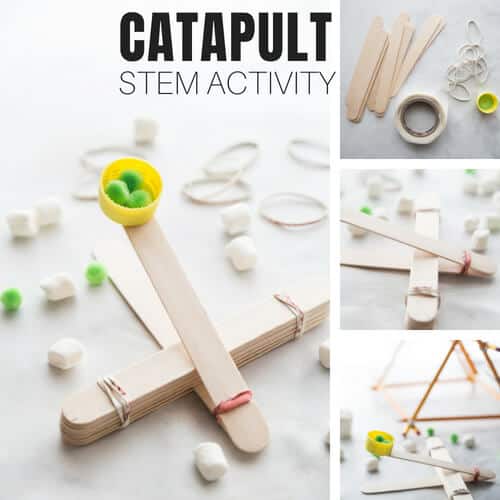
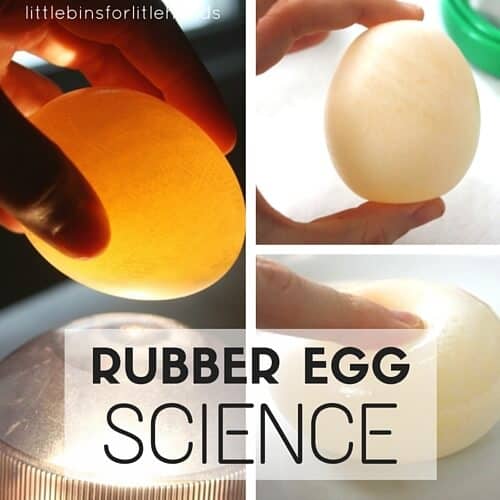


Link came through on my personal email….. I printed it out and can’t wait to do this with my class as we are studying Light / Shadows in science right now. PERFECT PROJECT. Thanks. SH